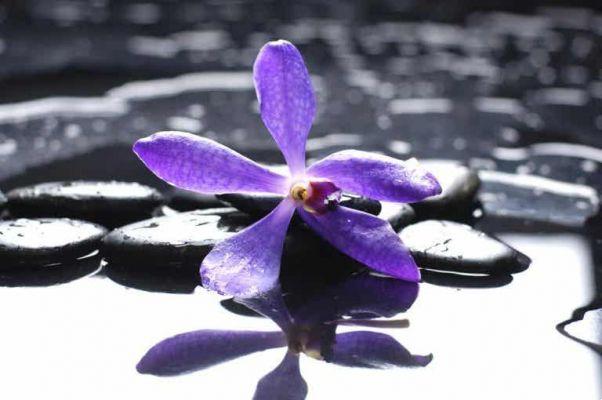To conduct a liberating introspection, it doesn't take much: enough time, adequate space, and a willingness to navigate within yourself.

Last update: December 08, 2018
In general terms, introspection is defined as the ability to observe, attend and connect with one's inner world. This process is addressed to raise the level of awareness of who we are and what we really want. Liberating introspection allows us to identify the obstacles that stand in the way of our personal growth.
The current context is, for the most part, extremely alienating. It disconnects us from ourselves and causes us to only look outside ourselves. Often it imposes on us a way of being and of wanting that does not necessarily coincide with who we really are. This also leads to passive adaptation or constant discomfort.
It is important to introduce a space into one's life that is necessary to conduct a liberating introspection. It doesn't take much: availability of time, adequate space and above all the authentic will to navigate within one's own inner world. Below we give you some tips to help you in this process.
"Reflection is the eye of the soul."
-Jacques Benigne Bossuet-
Useful tips for conducting a liberating introspection
1. Adequate context
The proper context for conducting a liberating introspection involves choosing the right time and place. The moment is when we are free from commitments and when no one can disturb us.
The place is a place where one feels at ease. If you have a secluded and quiet place, all the better. In any case, the essential thing is to have the interest and the will to conduct a positive introspection.
2. Examination of the past
The best way to initiate liberating introspection is to start with an analysis of the past. If what you have in mind is a detailed examination, you will have to start with the most recent past. If, on the other hand, you are going to conduct a deep introspection, there are no limits.
We recommend starting with simple questions. What are my recurring mistakes? Under what circumstances have I achieved my goals? Am I satisfied with the goals I have achieved? Under what circumstances did I feel I had flaws?
3. Identify the voids
A very important part of liberating introspection is identifying your gaps. These include unmet needs, a lack of answers to important questions, and difficulties in clarifying one's goals in some aspects of life.
It is important to analyze which of these deficiencies causes the most pain, dissatisfaction and distress. View the big picture and consider the possibility of specific solutions to put into practice. Otherwise, focus on gaps and gaps that are easier to fix.
4. Define obstacles of various kinds
At this stage you will need to use self-criticism constructively. It is about identifying the obstacles that keep you from filling the gaps and living a more fulfilling life. These obstacles can be mental, emotional or influenced by external factors.
The important thing is not to break down and keep an understanding attitude towards yourself. You don't have to judge yourself for mistakes, but to identify the barriers that prevent you from progressing.
In this passage it is necessary to clarify whether there are feelings of guilt, explicit or hidden, that torment you. Or unresolved anger about people or situations. Finally, if there is any fear that you cannot overcome. The result of this examination must be conclusive, so that introspection is truly liberating.
5. Recognize strengths and set goals
The real goal of liberating introspection is to improve yourself in one or more aspects of your life. The final step is therefore to recognize the strengths to initiate the change within oneself. The first of these is the interest that led you to carry out this process. The question you need to ask yourself is: which elements of my personality are my strengths? How can these strengths help me to change the "x" aspect?
Implicitly, this will lead you to set goals, which shouldn't be too many anyway. It would be preferable to have only one goal, with the secondary objectives that it implies. It all depends on how motivated you are. In any case, you will have to end the introspective process with a purpose related to change.
We recommend carrying out the liberating introspection process periodically. The first time you may find it a little strange, but with practice it will become more and more fluid. They are spaces dedicated to oneself that we must explore from time to time.


























